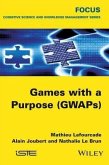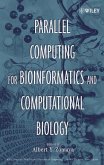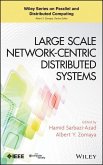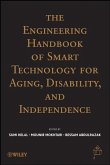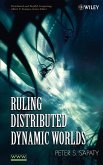139,99 €
139,99 €
inkl. MwSt.
Sofort per Download lieferbar

0 °P sammeln
139,99 €
Als Download kaufen

139,99 €
inkl. MwSt.
Sofort per Download lieferbar

0 °P sammeln
Jetzt verschenken
Alle Infos zum eBook verschenken
139,99 €
inkl. MwSt.
Sofort per Download lieferbar
Alle Infos zum eBook verschenken

0 °P sammeln
- Format: PDF
- Merkliste
- Auf die Merkliste
- Bewerten Bewerten
- Teilen
- Produkt teilen
- Produkterinnerung
- Produkterinnerung

Bitte loggen Sie sich zunächst in Ihr Kundenkonto ein oder registrieren Sie sich bei
bücher.de, um das eBook-Abo tolino select nutzen zu können.
Hier können Sie sich einloggen
Hier können Sie sich einloggen
Sie sind bereits eingeloggt. Klicken Sie auf 2. tolino select Abo, um fortzufahren.

Bitte loggen Sie sich zunächst in Ihr Kundenkonto ein oder registrieren Sie sich bei bücher.de, um das eBook-Abo tolino select nutzen zu können.
Human brains can be seen as knowledge processors in a distributed system. Each of them can achieve, conscious or not, a small part of a treatment too important to be done by one. These are also "hunter / gatherers" of knowledge. Provided that the number of contributors is large enough, the results are usually better quality than if they were the result of the activity of a single person, even if it is a domain expert. This type of activity is done via online games.
- Geräte: PC
- mit Kopierschutz
- eBook Hilfe
- Größe: 27.04MB
Andere Kunden interessierten sich auch für
![Games with a Purpose (GWAPS) (eBook, ePUB) Games with a Purpose (GWAPS) (eBook, ePUB)]() Mathieu LafourcadeGames with a Purpose (GWAPS) (eBook, ePUB)139,99 €
Mathieu LafourcadeGames with a Purpose (GWAPS) (eBook, ePUB)139,99 €![Large-scale Distributed Systems and Energy Efficiency (eBook, PDF) Large-scale Distributed Systems and Energy Efficiency (eBook, PDF)]() Jean-Marc PiersonLarge-scale Distributed Systems and Energy Efficiency (eBook, PDF)97,99 €
Jean-Marc PiersonLarge-scale Distributed Systems and Energy Efficiency (eBook, PDF)97,99 €![Parallel Computing for Bioinformatics and Computational Biology (eBook, PDF) Parallel Computing for Bioinformatics and Computational Biology (eBook, PDF)]() Parallel Computing for Bioinformatics and Computational Biology (eBook, PDF)179,99 €
Parallel Computing for Bioinformatics and Computational Biology (eBook, PDF)179,99 €![Large Scale Network-Centric Distributed Systems (eBook, PDF) Large Scale Network-Centric Distributed Systems (eBook, PDF)]() Large Scale Network-Centric Distributed Systems (eBook, PDF)116,99 €
Large Scale Network-Centric Distributed Systems (eBook, PDF)116,99 €![The Engineering Handbook of Smart Technology for Aging, Disability, and Independence (eBook, PDF) The Engineering Handbook of Smart Technology for Aging, Disability, and Independence (eBook, PDF)]() The Engineering Handbook of Smart Technology for Aging, Disability, and Independence (eBook, PDF)323,99 €
The Engineering Handbook of Smart Technology for Aging, Disability, and Independence (eBook, PDF)323,99 €![Ruling Distributed Dynamic Worlds (eBook, PDF) Ruling Distributed Dynamic Worlds (eBook, PDF)]() Peter SapatyRuling Distributed Dynamic Worlds (eBook, PDF)125,99 €
Peter SapatyRuling Distributed Dynamic Worlds (eBook, PDF)125,99 €![Deploying and Managing a Cloud Infrastructure (eBook, PDF) Deploying and Managing a Cloud Infrastructure (eBook, PDF)]() Abdul SalamDeploying and Managing a Cloud Infrastructure (eBook, PDF)38,99 €
Abdul SalamDeploying and Managing a Cloud Infrastructure (eBook, PDF)38,99 €-
-
-
Human brains can be seen as knowledge processors in a distributed system. Each of them can achieve, conscious or not, a small part of a treatment too important to be done by one. These are also "hunter / gatherers" of knowledge. Provided that the number of contributors is large enough, the results are usually better quality than if they were the result of the activity of a single person, even if it is a domain expert. This type of activity is done via online games.
Dieser Download kann aus rechtlichen Gründen nur mit Rechnungsadresse in A, B, BG, CY, CZ, D, DK, EW, E, FIN, F, GR, HR, H, IRL, I, LT, L, LR, M, NL, PL, P, R, S, SLO, SK ausgeliefert werden.
Produktdetails
- Produktdetails
- Verlag: John Wiley & Sons
- Seitenzahl: 160
- Erscheinungstermin: 29. Juni 2015
- Englisch
- ISBN-13: 9781119136323
- Artikelnr.: 43404644
- Verlag: John Wiley & Sons
- Seitenzahl: 160
- Erscheinungstermin: 29. Juni 2015
- Englisch
- ISBN-13: 9781119136323
- Artikelnr.: 43404644
- Herstellerkennzeichnung Die Herstellerinformationen sind derzeit nicht verfügbar.
Mathieu LAFOURCADE, LIRMM, Université Montpellier 2, France. Alain JOUBERT, LIRMM, Université Montpellier 2, France. Nathalie LE BRUN, Imagin@T, Fraance.
LIST OF FIGURES ix
INTRODUCTION xiii
CHAPTER 1. BIOLOGICAL GAMES 1
1.1. Foldit 2
1.2. EteRNA 5
1.3. Nanocrafter 8
1.4. Phylo 11
1.5. Fraxinus 15
1.6. Eyewire 18
1.7. Citizen sort 22
1.7.1. Happy match 22
1.7.2. Forgotten Island 24
1.8. The Nightjar project 25
1.8.1. Nightjar game/Nest game 26
1.8.2. Egglab game 28
1.9. References 29
CHAPTER 2. GAMES WITH A MEDICAL PURPOSE 31
2.1. Nanodoc 31
2.2. Dizeez 34
2.3. The Cure 35
2.4. Malaria Training Game 37
2.5. Malaria Spot Game 39
2.6. Worm Watch Lab 42
2.7. Play to Cure: Genes in Space 44
2.8. References 45
CHAPTER 3. GWAPS FOR NATURAL LANGUAGE PROCESSING 47
3.1. Why lexical resources? 47
3.2. GWAPs for natural language processing 48
3.2.1. The problem of lexical resource acquisition 49
3.2.2. Lexical resources currently available 50
3.2.3. Benefits of GWAPs in NLP 53
3.3. PhraseDetectives 54
3.4. PlayCoref 57
3.5. Verbosity 59
3.6. JeuxDeMots 61
3.7. Zombilingo 62
3.8. Infection 64
3.9. Wordrobe 66
3.10. Other GWAPs dedicated to NLP 68
3.10.1. Open Mind Word Expert 68
3.10.2. 1001 Paraphrases 69
3.10.3. Categorilla/Categodzilla 69
3.10.4. FreeAssociation 70
3.10.5. Entity Discovery 70
3.10.6. PhraTris 70
CHAPTER 4. UNCLASSIFIABLE GWAPS 73
4.1. Beat the Bots 73
4.2. Apetopia 75
4.3. Quantum Moves 76
4.4. Duolingo 77
4.5. The ARTigo portal 80
4.5.1. ARTigo and ARTigo Taboo 81
4.5.2. Combino 83
4.5.3. Karido 83
4.6. Be A Martian 85
4.7. Akinator, the genie of the Web 86
4.8. References 89
CHAPTER 5. THE JEUXDEMOTS PROJECT - GWAPS AND WORDS 91
5.1. Building a lexical network 91
5.2. JEUXDEMOTS: an association game 93
5.3. PTICLIC: an allocation game 96
5.4. TOTAKI: a guessing game 98
5.5. Voting games 99
5.5.1. ASKIT 100
5.5.2. LIKEIT 102
5.5.3. SEXIT 104
5.6. Multi-selection games 105
5.7. From games to contributory systems 109
5.8. Data collected and properties of the games presented 112
5.8.1. Instructions/difficult relations 114
5.8.2. Forcing, players typology and error rate 115
CONCLUSION 119
BIBLIOGRAPHY 127
INDEX 135
INTRODUCTION xiii
CHAPTER 1. BIOLOGICAL GAMES 1
1.1. Foldit 2
1.2. EteRNA 5
1.3. Nanocrafter 8
1.4. Phylo 11
1.5. Fraxinus 15
1.6. Eyewire 18
1.7. Citizen sort 22
1.7.1. Happy match 22
1.7.2. Forgotten Island 24
1.8. The Nightjar project 25
1.8.1. Nightjar game/Nest game 26
1.8.2. Egglab game 28
1.9. References 29
CHAPTER 2. GAMES WITH A MEDICAL PURPOSE 31
2.1. Nanodoc 31
2.2. Dizeez 34
2.3. The Cure 35
2.4. Malaria Training Game 37
2.5. Malaria Spot Game 39
2.6. Worm Watch Lab 42
2.7. Play to Cure: Genes in Space 44
2.8. References 45
CHAPTER 3. GWAPS FOR NATURAL LANGUAGE PROCESSING 47
3.1. Why lexical resources? 47
3.2. GWAPs for natural language processing 48
3.2.1. The problem of lexical resource acquisition 49
3.2.2. Lexical resources currently available 50
3.2.3. Benefits of GWAPs in NLP 53
3.3. PhraseDetectives 54
3.4. PlayCoref 57
3.5. Verbosity 59
3.6. JeuxDeMots 61
3.7. Zombilingo 62
3.8. Infection 64
3.9. Wordrobe 66
3.10. Other GWAPs dedicated to NLP 68
3.10.1. Open Mind Word Expert 68
3.10.2. 1001 Paraphrases 69
3.10.3. Categorilla/Categodzilla 69
3.10.4. FreeAssociation 70
3.10.5. Entity Discovery 70
3.10.6. PhraTris 70
CHAPTER 4. UNCLASSIFIABLE GWAPS 73
4.1. Beat the Bots 73
4.2. Apetopia 75
4.3. Quantum Moves 76
4.4. Duolingo 77
4.5. The ARTigo portal 80
4.5.1. ARTigo and ARTigo Taboo 81
4.5.2. Combino 83
4.5.3. Karido 83
4.6. Be A Martian 85
4.7. Akinator, the genie of the Web 86
4.8. References 89
CHAPTER 5. THE JEUXDEMOTS PROJECT - GWAPS AND WORDS 91
5.1. Building a lexical network 91
5.2. JEUXDEMOTS: an association game 93
5.3. PTICLIC: an allocation game 96
5.4. TOTAKI: a guessing game 98
5.5. Voting games 99
5.5.1. ASKIT 100
5.5.2. LIKEIT 102
5.5.3. SEXIT 104
5.6. Multi-selection games 105
5.7. From games to contributory systems 109
5.8. Data collected and properties of the games presented 112
5.8.1. Instructions/difficult relations 114
5.8.2. Forcing, players typology and error rate 115
CONCLUSION 119
BIBLIOGRAPHY 127
INDEX 135
LIST OF FIGURES ix
INTRODUCTION xiii
CHAPTER 1. BIOLOGICAL GAMES 1
1.1. Foldit 2
1.2. EteRNA 5
1.3. Nanocrafter 8
1.4. Phylo 11
1.5. Fraxinus 15
1.6. Eyewire 18
1.7. Citizen sort 22
1.7.1. Happy match 22
1.7.2. Forgotten Island 24
1.8. The Nightjar project 25
1.8.1. Nightjar game/Nest game 26
1.8.2. Egglab game 28
1.9. References 29
CHAPTER 2. GAMES WITH A MEDICAL PURPOSE 31
2.1. Nanodoc 31
2.2. Dizeez 34
2.3. The Cure 35
2.4. Malaria Training Game 37
2.5. Malaria Spot Game 39
2.6. Worm Watch Lab 42
2.7. Play to Cure: Genes in Space 44
2.8. References 45
CHAPTER 3. GWAPS FOR NATURAL LANGUAGE PROCESSING 47
3.1. Why lexical resources? 47
3.2. GWAPs for natural language processing 48
3.2.1. The problem of lexical resource acquisition 49
3.2.2. Lexical resources currently available 50
3.2.3. Benefits of GWAPs in NLP 53
3.3. PhraseDetectives 54
3.4. PlayCoref 57
3.5. Verbosity 59
3.6. JeuxDeMots 61
3.7. Zombilingo 62
3.8. Infection 64
3.9. Wordrobe 66
3.10. Other GWAPs dedicated to NLP 68
3.10.1. Open Mind Word Expert 68
3.10.2. 1001 Paraphrases 69
3.10.3. Categorilla/Categodzilla 69
3.10.4. FreeAssociation 70
3.10.5. Entity Discovery 70
3.10.6. PhraTris 70
CHAPTER 4. UNCLASSIFIABLE GWAPS 73
4.1. Beat the Bots 73
4.2. Apetopia 75
4.3. Quantum Moves 76
4.4. Duolingo 77
4.5. The ARTigo portal 80
4.5.1. ARTigo and ARTigo Taboo 81
4.5.2. Combino 83
4.5.3. Karido 83
4.6. Be A Martian 85
4.7. Akinator, the genie of the Web 86
4.8. References 89
CHAPTER 5. THE JEUXDEMOTS PROJECT - GWAPS AND WORDS 91
5.1. Building a lexical network 91
5.2. JEUXDEMOTS: an association game 93
5.3. PTICLIC: an allocation game 96
5.4. TOTAKI: a guessing game 98
5.5. Voting games 99
5.5.1. ASKIT 100
5.5.2. LIKEIT 102
5.5.3. SEXIT 104
5.6. Multi-selection games 105
5.7. From games to contributory systems 109
5.8. Data collected and properties of the games presented 112
5.8.1. Instructions/difficult relations 114
5.8.2. Forcing, players typology and error rate 115
CONCLUSION 119
BIBLIOGRAPHY 127
INDEX 135
INTRODUCTION xiii
CHAPTER 1. BIOLOGICAL GAMES 1
1.1. Foldit 2
1.2. EteRNA 5
1.3. Nanocrafter 8
1.4. Phylo 11
1.5. Fraxinus 15
1.6. Eyewire 18
1.7. Citizen sort 22
1.7.1. Happy match 22
1.7.2. Forgotten Island 24
1.8. The Nightjar project 25
1.8.1. Nightjar game/Nest game 26
1.8.2. Egglab game 28
1.9. References 29
CHAPTER 2. GAMES WITH A MEDICAL PURPOSE 31
2.1. Nanodoc 31
2.2. Dizeez 34
2.3. The Cure 35
2.4. Malaria Training Game 37
2.5. Malaria Spot Game 39
2.6. Worm Watch Lab 42
2.7. Play to Cure: Genes in Space 44
2.8. References 45
CHAPTER 3. GWAPS FOR NATURAL LANGUAGE PROCESSING 47
3.1. Why lexical resources? 47
3.2. GWAPs for natural language processing 48
3.2.1. The problem of lexical resource acquisition 49
3.2.2. Lexical resources currently available 50
3.2.3. Benefits of GWAPs in NLP 53
3.3. PhraseDetectives 54
3.4. PlayCoref 57
3.5. Verbosity 59
3.6. JeuxDeMots 61
3.7. Zombilingo 62
3.8. Infection 64
3.9. Wordrobe 66
3.10. Other GWAPs dedicated to NLP 68
3.10.1. Open Mind Word Expert 68
3.10.2. 1001 Paraphrases 69
3.10.3. Categorilla/Categodzilla 69
3.10.4. FreeAssociation 70
3.10.5. Entity Discovery 70
3.10.6. PhraTris 70
CHAPTER 4. UNCLASSIFIABLE GWAPS 73
4.1. Beat the Bots 73
4.2. Apetopia 75
4.3. Quantum Moves 76
4.4. Duolingo 77
4.5. The ARTigo portal 80
4.5.1. ARTigo and ARTigo Taboo 81
4.5.2. Combino 83
4.5.3. Karido 83
4.6. Be A Martian 85
4.7. Akinator, the genie of the Web 86
4.8. References 89
CHAPTER 5. THE JEUXDEMOTS PROJECT - GWAPS AND WORDS 91
5.1. Building a lexical network 91
5.2. JEUXDEMOTS: an association game 93
5.3. PTICLIC: an allocation game 96
5.4. TOTAKI: a guessing game 98
5.5. Voting games 99
5.5.1. ASKIT 100
5.5.2. LIKEIT 102
5.5.3. SEXIT 104
5.6. Multi-selection games 105
5.7. From games to contributory systems 109
5.8. Data collected and properties of the games presented 112
5.8.1. Instructions/difficult relations 114
5.8.2. Forcing, players typology and error rate 115
CONCLUSION 119
BIBLIOGRAPHY 127
INDEX 135

